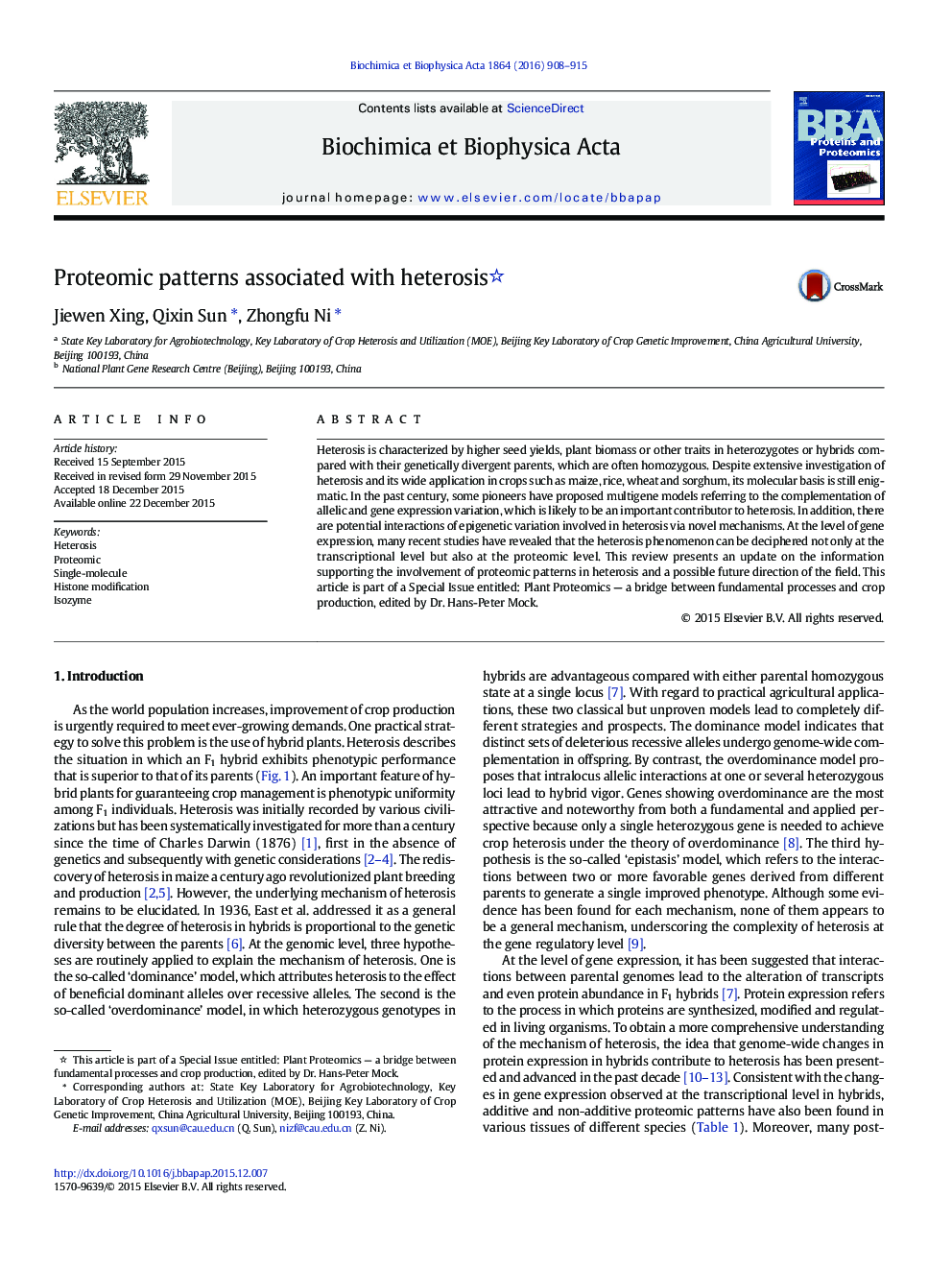| Article ID | Journal | Published Year | Pages | File Type |
|---|---|---|---|---|
| 1178102 | Biochimica et Biophysica Acta (BBA) - Proteins and Proteomics | 2016 | 8 Pages |
•Provides a brief history of protein and proteomic tools used in heterosis research.•Describes a global insight of changes of proteomic patterns in hybrids relative to parents.•Summarizes the important examples of single-molecule heterosis.•Gives possible points we could focus on in future study of heterosis.
Heterosis is characterized by higher seed yields, plant biomass or other traits in heterozygotes or hybrids compared with their genetically divergent parents, which are often homozygous. Despite extensive investigation of heterosis and its wide application in crops such as maize, rice, wheat and sorghum, its molecular basis is still enigmatic. In the past century, some pioneers have proposed multigene models referring to the complementation of allelic and gene expression variation, which is likely to be an important contributor to heterosis. In addition, there are potential interactions of epigenetic variation involved in heterosis via novel mechanisms. At the level of gene expression, many recent studies have revealed that the heterosis phenomenon can be deciphered not only at the transcriptional level but also at the proteomic level. This review presents an update on the information supporting the involvement of proteomic patterns in heterosis and a possible future direction of the field. This article is part of a Special Issue entitled: Plant Proteomics — a bridge between fundamental processes and crop production, edited by Dr. Hans-Peter Mock.
